

Project Universe followed on from the Stella Project. RAL joined with Cambridge University, Loughborough University and University College London in late 1980 to put a proposal to SERC for the UNIVERSE project, an experiment in high-speed computer networking. (UNIVERSE stands for Universities Expanded Ring and Satellite Experiment.) The proposed experiment was to investigate the use of a concatenation of Cambridge Rings and a small dish satellite network to provide a wide-area computer network. The general configuration envisaged was the use of interlinked rings within a site for local distribution with the satellite network joining the sites together. Subsequently the project was expanded to include seven sites, the four SERC sites together with GEC/Marconi Research Centre at Great Baddow, British Telecom research at Martlesham and Logica offices in London. The project was approved as a national effort in Information Technology in April with funding being shared between the DoI, SERC, British Telecom, GEC and Logica.
Because of the limited life of the OTS satellite, the project worked to very tight time-scales. The aim was to bring the network into operation during the first half of 1982. RAL and Martlesham would use existing earth stations and four new Marconi earth stations were to be delivered to the other sites during February and March 1982. The Logica site was not to have a separate earth station but was to be connected to the VCL site by a high-speed ground link which had already been installed by British Telecom.
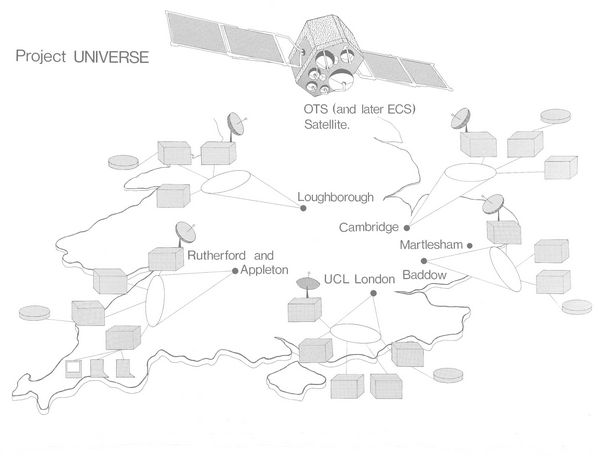
The initial programme of experiments to be carried out on the network were:
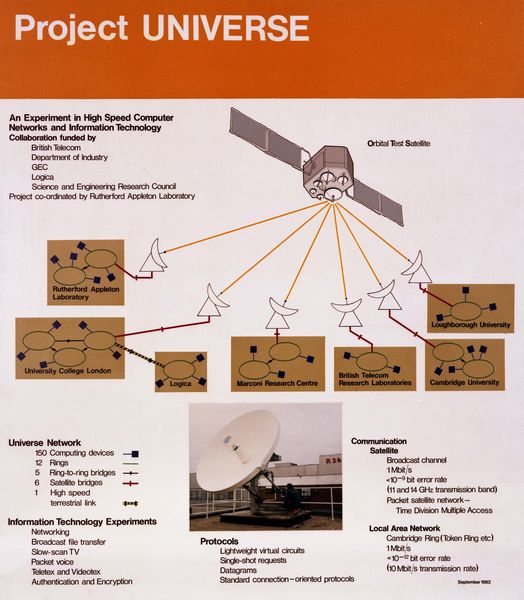
By the end of 1982, the project was up and running and there was a formal ministerial launch in London in February 1983.
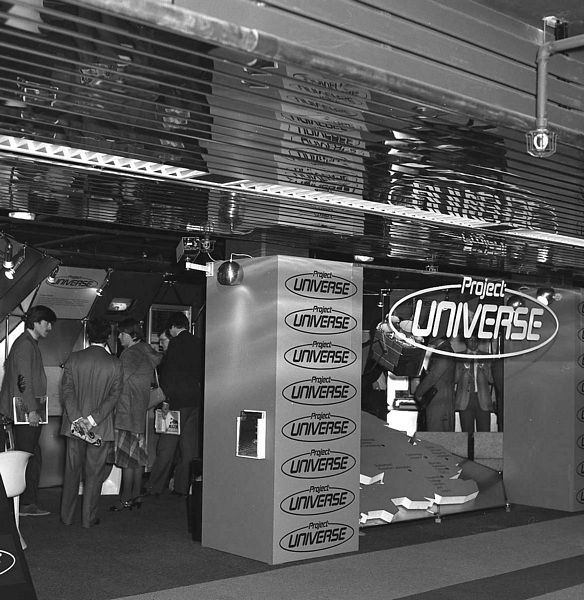
The group at RAL played a key role in assembling the necessary equipment and in programming the computers which link the satellite Earth terminals to the Cambridge Rings. This involved a GEC4000 series machine commanding a microprocessor-based interface machine, originally developed for the STELLA project. Initial communication was achieved between the RAL ring and the satellite early in 1982. Five of the six sites were connected operationally by the satellite network by the end of 1982.
Experiments in 1983 covered a range of applications, including distributed computing, voice communication and slow scan television.
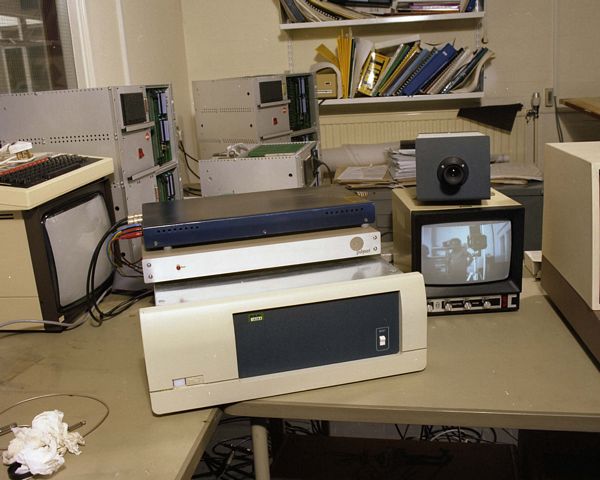
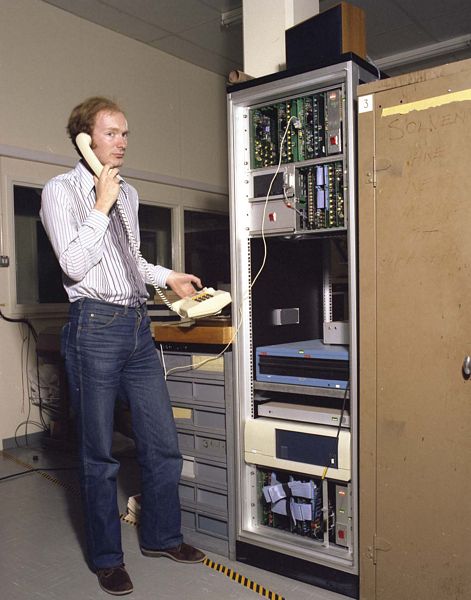
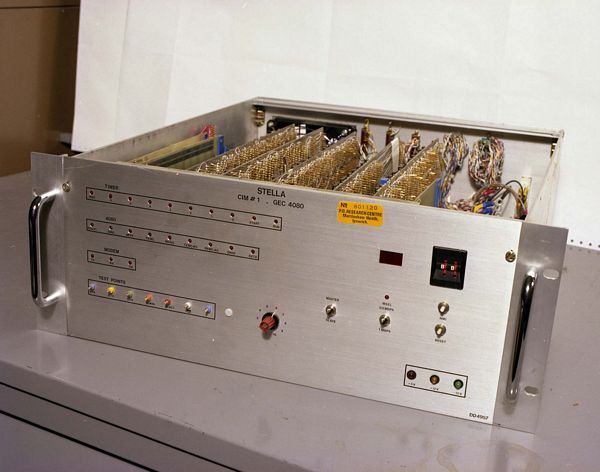
The satellite channel provided an overall bandwidth of 2Mbits/sec which was reduced to 1 Mbit/sec by forward error correction. The Cambridge Rings provided a comparable speed but with a lower error rate. Because applications were as diverse as voice and slow-scan TV, it was necessary to schedule the use of the satellite channel for a mix both in size and quantity of packets to be sent. In UNIVERSE, each site had a time allocation depending on its view of its need which was frequently updated. Within each time frame, each site is allocated a small window in which it may transmit its next time request. Each time frame was 130 milliseconds. (The roundtrip to the satellite and back is about 260 milliseconds.) Each site could send a burst of information in a time frame if it had an allocation. A 2048 byte block transmitted in about 20 milliseconds. The protocol defined the sender, receiver (could be a broadcast to several sites) and some control information.
The characteristics of the Cambridge Rings and the Universe protocol were similar in that the order in which packets were received was the same as the order in which they were sent.
By allowing several users to broadcast information within a single application, teleconferencing was possible over the network. The bridge (the GEC computer) between the Cambridge Ring and the satellite also acted as the multicast reception service.
The satellite transmission protocol of the universe project , A G Waters and C J Adams, ACM SIGCOMM Computer Communication Review, Vol 14 No 2, June 1984
The architecture of the universe network , Ian M Leslie, Roger M Needham, John W Burren, Graham C Adams, Second annual conference on data communications on Communications architectures and protocols, June 1984, Montreal
The use of broadcast techniques on the universe network , A. Gillian Waters, Christopher J. Adams, Ian M. Leslie, Roger M. Needham, Second annual conference on data communications on Communications architectures and protocols, June 1984, Montreal
Managed File Distribution on the UNIVERSE Network , C S Cooper, Second annual conference on data communications on Communications architectures and protocols, June 1984, Montreal
See also: